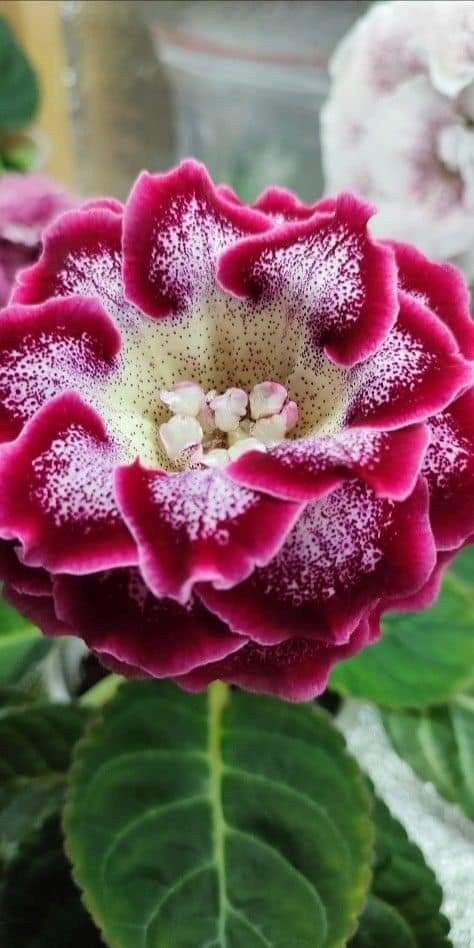The Gloxinia (Sinningia speciosa) is an exquisite flowering plant that can bring a touch of elegance to any garden. Known for its velvety, ruffled petals and speckled centers, it is a beloved favorite among gardeners who seek beauty and color in their indoor spaces. Native to the tropical regions of South America, the Gloxinia thrives in conditions that mimic its natural environment—warm temperatures and high humidity.
Key Features of Gloxinia
- Flower Appearance: The Gloxinia is known for its striking flowers that feature velvety petals in various colors, including rich shades of purple, red, and pink, often with a contrasting speckled center. The petals are ruffled, adding a dramatic and elegant touch to any garden or indoor space.
- Blooming Season: Gloxinia blooms primarily in the spring and summer, making it a popular plant for brightening up the warmer months. The lush flowers can last for several weeks, providing a long-lasting display of color.
- Ideal Temperature: Gloxinia thrives in warm temperatures, with an ideal range between 18-24°C (65-75°F). It is important to keep it in a warm environment to ensure optimal growth and blooming.
Growing Conditions
- Light: Gloxinia prefers indirect light. While it enjoys bright light, it should not be exposed to direct sunlight as this can scorch the delicate petals and leaves. An east- or west-facing window is usually ideal for this plant.
- Humidity: As a tropical plant, Gloxinia thrives in high humidity. To maintain the required moisture levels, consider placing the plant on a humidity tray or using a humidifier. Regular misting can also help if you live in a dry climate.
- Watering: Water the Gloxinia regularly, but be careful not to overwater. Allow the soil to dry out slightly between waterings to prevent root rot. The plant prefers well-draining soil, so ensure that the pot has good drainage to avoid waterlogging.
Caring for Your Gloxinia
- Soil: Gloxinia prefers a well-draining soil mix. A mix that contains peat moss, perlite, and cactus soil can help to retain moisture while ensuring the plant doesn’t stay too wet, which could lead to root rot.
- Fertilization: Gloxinia benefits from a balanced liquid fertilizer applied once a month during its growing season. Be sure to dilute the fertilizer to half strength to avoid overfeeding.
- Pruning: After the plant finishes blooming, cut back the spent flowers to encourage new growth. Deadheading will help the plant focus its energy on new buds.
Common Problems and Solutions
- Yellowing Leaves: If the leaves of the Gloxinia begin to turn yellow, it may be a sign of overwatering or poor drainage. Make sure the soil is well-draining, and adjust your watering schedule if necessary.
- Pests: While Gloxinia is relatively pest-resistant, it can sometimes fall victim to aphids or mealybugs. Check the undersides of leaves for any signs of pests, and treat with insecticidal soap if needed.
Conclusion
The Gloxinia is an exceptional indoor plant known for its beauty and ease of care. Its ruffled, velvet-like petals in shades of purple, pink, and red make it a stunning addition to any garden or living room. By providing the right amount of light, humidity, and water, you can enjoy the elegant blooms of this tropical beauty year after year. Whether grown in a pot indoors or as part of a tropical garden, Gloxinia is sure to become a cherished plant in your collection.
